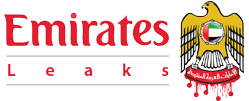The UAE government has deliberately sent a signal of diminishing authority to Yemen’s Presidential Council from the UN headquarters in New York, highlighting Abu Dhabi’s ongoing efforts to foster division and fragmentation within Yemen.
This action unfolded during a meeting between Abdullah bin Zayed Al Nahyan, UAE’s Deputy Prime Minister and Minister of Foreign Affairs, and Aidaros Zubaidi, Vice-President of Yemen’s Presidential Leadership Council and President of the Southern Transitional Council (STC), who remains a loyal ally to Abu Dhabi. The meeting took place on the sidelines of the 79th session of the United Nations General Assembly in New York.
During the meeting, Abdullah bin Zayed met with Zubaidi in the absence of the President of Yemen’s Presidential Leadership Council, Rashad al-Alimi. This was notable because the meeting did not include the usual official delegation representing the Council’s President and instead was restricted to Zubaidi’s associates.
Zubaidi, who enjoys significant financial and political backing from Abu Dhabi, has been an outspoken advocate for the separation of southern Yemen from the northern regions.
Photos from the meeting quickly attracted attention on social media, with numerous Abu Dhabi-based security commentators sharing the images with pride. This demonstrated Abu Dhabi’s ongoing support for its allies, using international platforms like the UN and the official state flags of the countries involved to project this support.
However, the meeting’s optics, conducted under the Yemeni national flag, stand in stark contrast to Zubaidi’s well-known ambitions for secession and Abu Dhabi’s broader strategy in Yemen.
Observers believe this event reflects Abu Dhabi’s resolve to entrench divisions within Yemen’s Presidential Council, weakening the country’s internal political cohesion in its ongoing struggle against the Houthis. This fragmentation reinforces Yemen’s ongoing instability, with the nation remaining trapped in a prolonged state of neither war nor peace, further exacerbating its economic, military, and security challenges.
Last month, French researcher Stéphane Lacroix identified three primary elements driving the UAE’s strategy in the Middle East: the alliance with Israel and the promotion of normalization, support for authoritarian regimes, and efforts to partition Yemen. In an interview with Orient 21 magazine, Lacroix explained that the UAE’s policies, rather than stabilizing the region, are contributing to instability and chaos.
Lacroix emphasized that the UAE’s vision of stability is based on the reinforcement of authoritarian regimes, a model that stands in opposition to the ideals of the Arab Spring. This strategy relies on strongmen like Egypt’s President Abdel Fattah el-Sisi, who has received substantial support from Abu Dhabi. The UAE combines this political stance with economic liberalism, promoting open markets and trade, including normalization with Israel, which Abu Dhabi views as economically beneficial.
Lacroix also highlighted that the UAE’s geopolitical ambitions involve its active participation in regional conflicts, including in Libya, Yemen, and Sudan, where it has supported various authoritarian regimes or factions. Lacroix warned that the UAE’s backing of political systems responsible for serious human rights violations, such as the violent crackdown on Muslim Brotherhood supporters in Egypt in 2013, further undermines stability in the region.
Additionally, Lacroix expressed doubts about the long-term sustainability of the UAE’s model, which blends authoritarianism with free-market principles. He argued that the complexities of the region make it difficult for this approach to succeed, and that efforts to impose this model could ultimately lead to more instability, rather than stability.
Lacroix pointed to the UAE’s concerted efforts to counter political Islam, a campaign that began in 2011. The UAE was instrumental in the military’s ousting of Egypt’s elected president Mohamed Morsi in 2013, and has since extended this policy across the region, including support for General Khalifa Haftar in Libya’s civil war and opposition to the Islamist Ennahda party in Tunisia.
Abu Dhabi’s interventionist policies have often favored authoritarian regimes and sought to undermine Islamist movements, particularly the Muslim Brotherhood.
In Yemen, the UAE’s strategy diverges from that of its ally, Saudi Arabia, despite their formal alignment in the conflict against the Houthis. While Saudi Arabia aims to restore Yemen’s legitimate government, the UAE has focused on creating an environment hostile to political Islam.
This has led Abu Dhabi to support separatist factions like the Southern Transitional Council, which seek to establish an independent southern state. Lacroix noted that the UAE’s backing of southern separatists is part of a broader plan to consolidate influence in southern Yemen.
Lacroix also explained that the UAE’s long-term strategy involves dividing Yemen by supporting the declaration of a separate southern state, thereby facilitating Abu Dhabi’s control over the region. This southern state, under the influence of the STC, would act as a buffer against the spread of political Islam and allow Abu Dhabi to exert greater control over strategic areas, including key ports.
In conclusion, Lacroix noted that Abu Dhabi views southern separatists as valuable allies in its fight against political Islam, and the division of Yemen aligns with the UAE’s broader geopolitical goals. The creation of a pro-Emirati southern state would allow Abu Dhabi to establish an “Emirati protectorate,” further entrenching its influence in the region.



